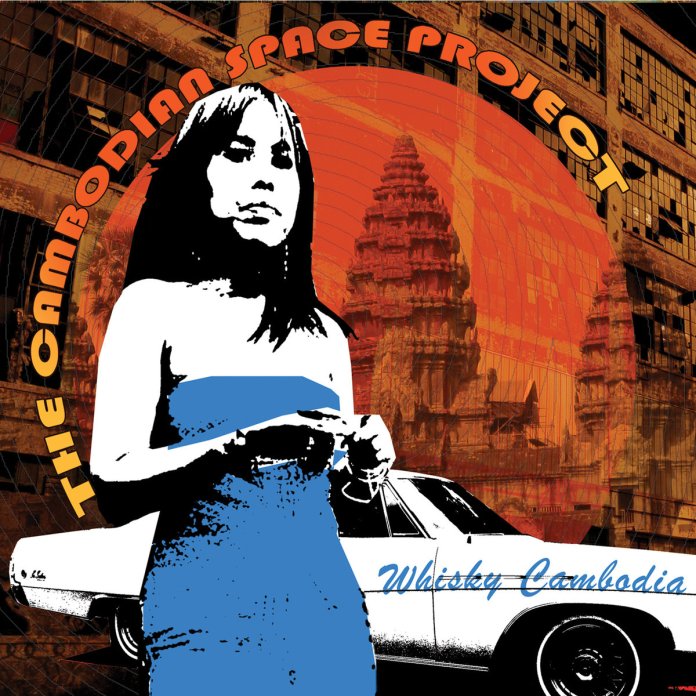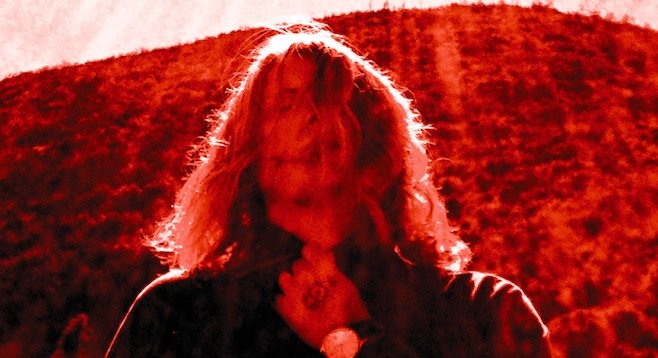
Cambodian Space Project – Whiskey Cambodia
Despite Pol Pot’s mass murder of its western-influenced population, Cambodia’s rock and pop scene of the late 60s lives on amongst the stacks of tapes and CDs hawked on Phnom Phen street corners. Snapped up by American tourists like Paul Wheeler, and sampled on his 1996 Cambodia Rocks compilation, these mid-fi treasures sounded like The Ventures lost on Gilligan’s Island, and devotees of finer off-beat garage rock devoured them like so much banh chiao. In due time bands like Dengue Fever produced their own version of Khmer-beat and the Cambodian rock revival launched into orbit, even though most garage rockers are not in fact fluent in Kmher.
Meanwhile back in Cambodia, Srey Thy, a war child survivor, continued the tuneful tradition in her homeland tape traders despite growing up in dreadful circumstances that involved kidnapping, slavery and, as the story goes, having to sleep in an abandoned army tank. Srey persevered, pulling through long enough to discover the karaoke bar where she’d serenade hard partying (and paying) tourists. It was there Tasmanian rocker Julien Poulson heard her voice and knew he needed her to put together a band. The Cambodian Space Project was born.
In hindsight it’s easy to spot Poulson’s vision of marrying simple honest garage rock to Thy’s haunted, resonant vocals. Srey’s melancholy birdsong of loss and yearning compliments bashing drums and reverb drenched power chords with stage presence to spare. The Space Project recorded albums and toured everywhere. On the road with CSP, Srey entertained and inspired many, eventually utilizing her new high profile to become a prominent human rights activist.
On their 3rd LP – “Whiskey Cambodia” – the CSP drive their rocket ship into the heart of American 60s pop: Detroit, Michigan. Employing first rate Motown session players, the Space Project evolves past surf and garage without dropping the party vibe. After opening with surf stomper “Dance Twist” the new line-up shifts from ballads (“If You Go I Go Too”) and 70s soul/funk (“Black to Gold”) to dancehall pop (“Mountain Dance”) and the Doors-like soundscape of the title track as deftly as one would move from the beach to the hot tub. While some of the grit has been cleaned out on this go round the celebration and adventure remain. Much of the adventurous spirit is supplied courtesy of guitar wizard Dennis Coffey who himself brought Motown into the space age (and the 70s) with his legendary guitar effects on Edwin Starr’s “War (What is it Good For?)” and the Temptations “Ball of Confusion”.
Overall this collection provides ample reasons to rip Love Shack off the hi-fi and elevate the party headspace to a more exotic chill-factor. As with most of what you’d call party rock, it’s sounds exceptionally better after a few Mai Tais and/or Thai sticks, creating your own personal space project in your mind. For added authenticity you may want to dub the album onto cassette a few generations and play it through a giant boom box which you’ve bungee corded to the back of a moped before heading off to Bamboo Island to catch some waves.
Originally published in Saachi Gallery Art & Music Magazine

